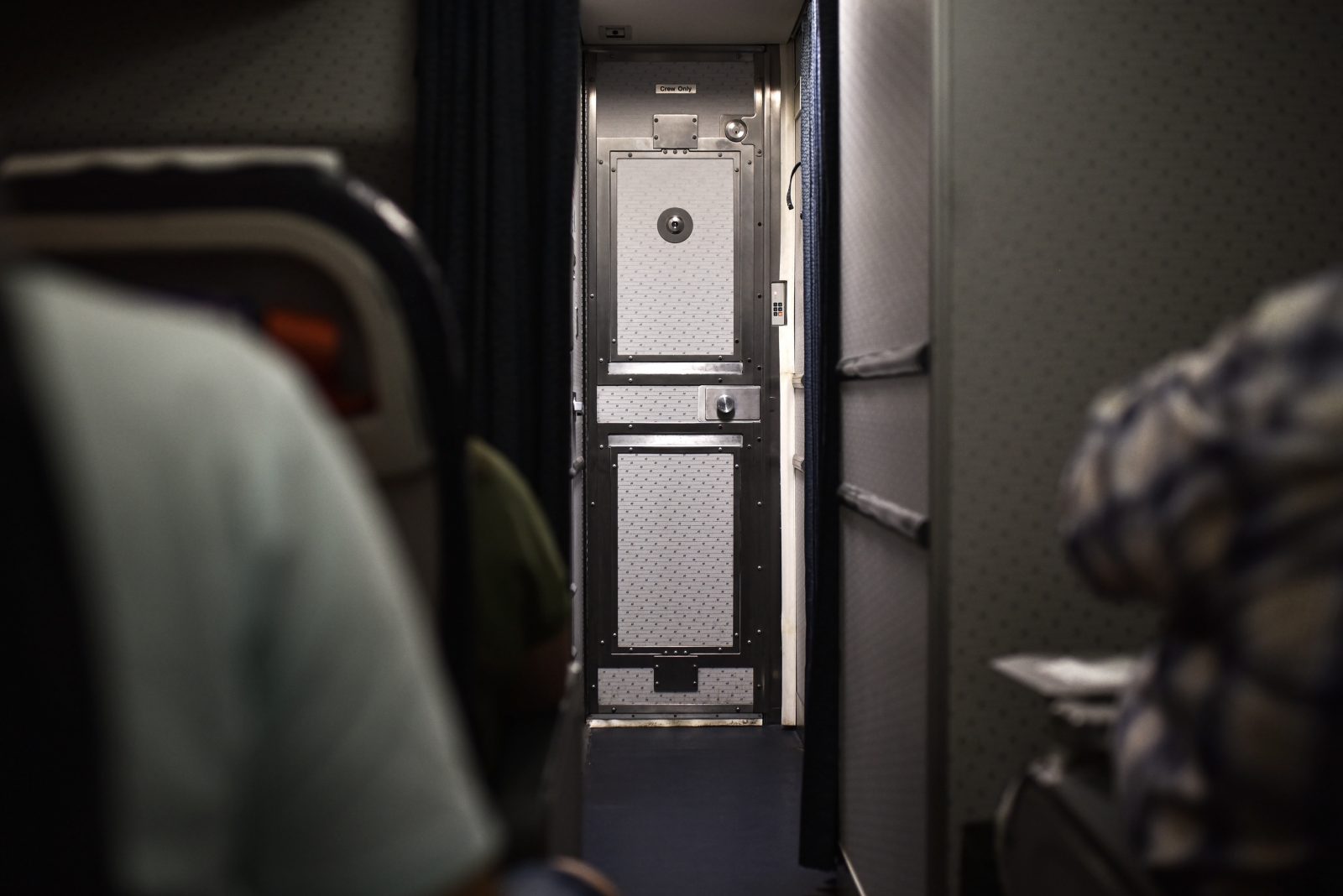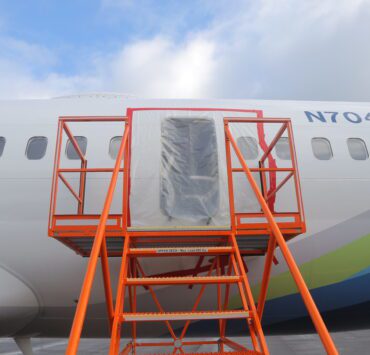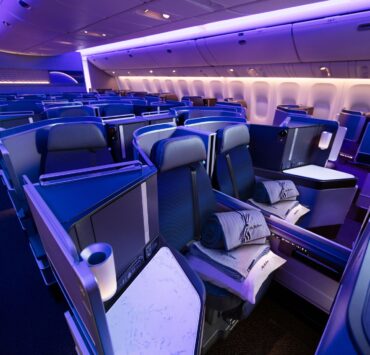
The cockpit door on the Boeing 737MAX-9 is designed to rip open in the end of a rapid depressurization and worked as it was meant to during Alaska Airlines flight 1282 on Friday evening after suffering an ‘explosive’ exit plug blowout.
During a National Transportation Safety Board (NTSB) press briefing on Monday, investigators confirmed that Boeing built this feature into the MAX-9 but failed to tell pilots as this information isn’t stated in the airplane’s manual.
NTSB Chair Jennifer Homendy explained: “The cockpit door is designed to open during rapid decompression, however, no one among the flight crew knew that… they were not informed”.
“Boeing is going to make some changes to the manual, which then hopefully will translate into procedures and information for the flight attendants and the crew in the cockpit”.
Although it may sound surprising, the flight deck on several aircraft types, including models built by rival aircraft manufacturer Airbus, are designed to automatically unlock in the event of a rapid depressurization.
On some models, the door is designed to open outwards into the cabin if the rapid decompression occurs in the cabin. However, if the decompression were to happen in the cockpit, then an emergency escape panel is designed to open inwards into the flight deck.
Some aircraft have special hooks that ‘catch’ the flight deck door if it swings open in the event of a rapid decompression. The design is meant to ensure that pressurization remains equal throughout the aircraft.
In other news released by the NTSB:
- The flight attendants on flight 1282 didn’t know what was happening in the immediate aftermath of the depressurization and were focused on the safety of the three unaccompanied children and three lap infants on the aircraft.
- Two flight attendants sat at the back of the aircraft told investigators the incident was “terrifying” and that they couldn’t see what was happening in the cabin from their jumpseats in the aft galley.
- The NTSB has told the media to stop trying to contact the flight attendants so that they have time to “heal”.
- The oxygen masks in the cabin deployed as designed, but some passengers restored the masks.
- A headrest and plastic window sucked out of the aircraft on flight 1282 are among items found by members of the public in the Portland area.
Both Alaska Airlines and United Airlines have now confirmed that they have found loose bolts and ‘hardware’ on exit door plugs on some Boeing 737 MAX 9 aircraft during preliminary inspections.
Hundreds of flight cancellations have been posted on Tuesday, and disruption is expected through mid-week at the earliest.
In its latest statement, Alaska Airlines stated that detailed instructions to inspect the door plug on other affected MAX 9s have now been received from the FAA and Boeing but that it will take time to complete the multi-step inspection process.
Mateusz Maszczynski honed his skills as an international flight attendant at the most prominent airline in the Middle East and has been flying throughout the COVID-19 pandemic for a well-known European airline. Matt is passionate about the aviation industry and has become an expert in passenger experience and human-centric stories. Always keeping an ear close to the ground, Matt's industry insights, analysis and news coverage is frequently relied upon by some of the biggest names in journalism.










Interesting report, and another example of Boeing not informing flight crew about design decisions.
While thinking about this, I remembered the Helios 522 crash – I wonder if it was a factor in their design of the cockpit door blow-out? Still no excuse for Boeing’s failure to communicate with flight crew/ authorities.
Baloney. ALL Boeings (and other makes) have been equipped with cockpit doors of similar construction since the post-911 hardening of cockpit access. These blowout panels are designed equalize pressure between the cockpit and cabin in the event of rapid depressurization. If they weren’t made that way, there’s a chance the door frame could be stressed to failure during a rapid loss of cabin pressure, rendering the door inoperable (stuck shut) upon landing and keeping the flight crew from utilizing the main means of egress.
EVERY Boeing 737 flight crew member understands how these panels work. Your attempt to paint this as a willful omission by Boeing is inaccurate in every way.
So the NTSB chairperson ‘mis-spoke’?